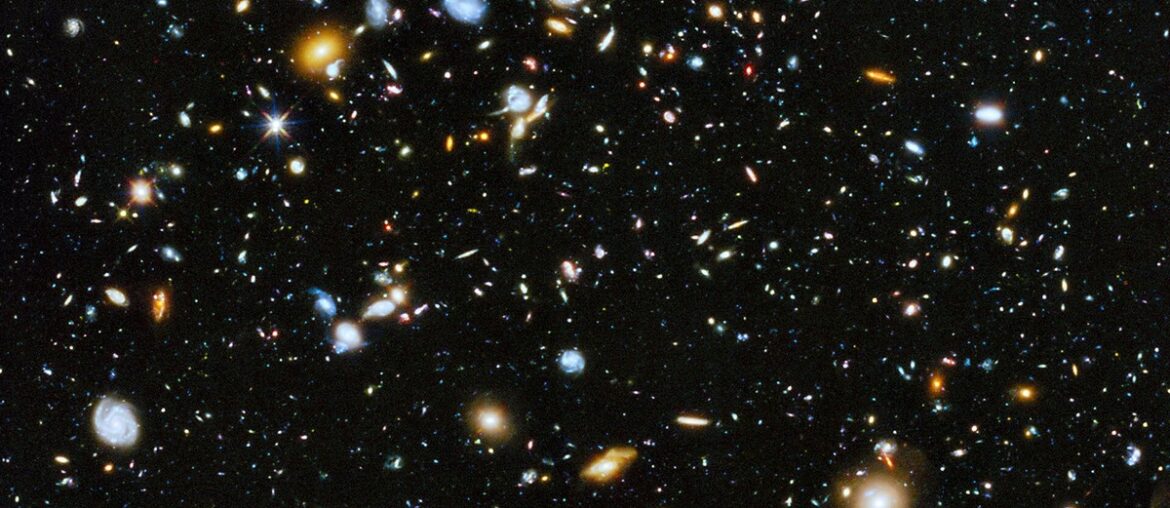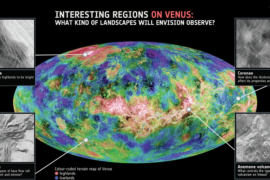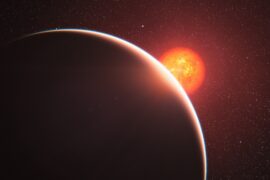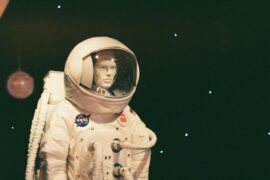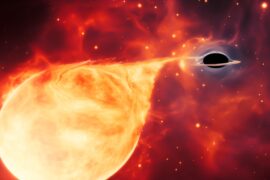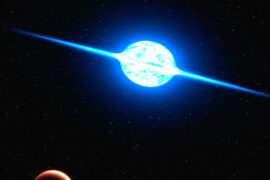On December 24, 1968, William Anders aboard Apollo 8 turned his Hasselblad toward the Moon and photographed Earth rising over the lunar horizon — a single frame that changed how humanity saw its place in the universe.
Why do images taken from above matter so much? Because pictures from space do three things at once: they serve science by documenting environments we can’t visit directly, they drive technological innovation in sensors and platforms, and they reshape public imagination about our planet and the cosmos.
This article traces 10 pivotal milestones in space photography — from the first Moon daguerreotype to the James Webb Space Telescope — and explains how each advance improved our ability to see, measure, and understand the universe. Dates and missions (Apollo 8, Luna 3, Voyager, Hubble, JWST) appear throughout to anchor each turning point.
Pioneering Images: First Photographs from Earth and Early Rockets
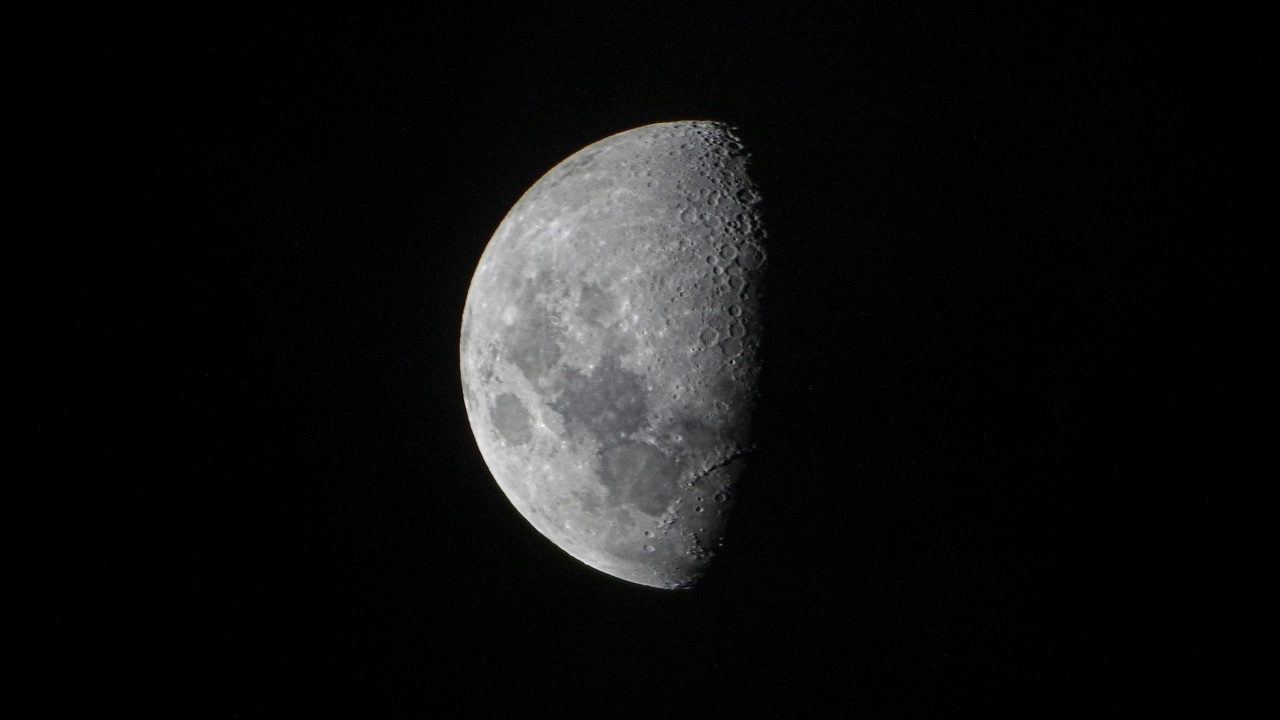
Photography and rocketry met in stages. Nineteenth-century lunar daguerreotypes turned sketches into repeatable records, while World War II-era rockets and early robotic probes carried film cameras above the atmosphere for the first time. Those experiments moved astronomical observation from ground-bound telescopes to airborne and suborbital platforms, then on to automated explorers that sent back landscapes no human had seen.
1. John William Draper’s first Moon photograph (1840)
In about 1840 John William Draper at New York University used the daguerreotype process to produce one of the earliest reliable photographic images of the Moon. At a time when astronomers relied on drawings, Draper’s chemical plates captured lunar shading and surface markings with an objectivity sketches lacked.
The practical payoff was immediate: photographs allowed repeatable records and measurements of lunar features, which improved maps and supported comparative studies over time. Draper’s work helped establish photography as a legitimate tool for astronomy rather than a mere novelty.
2. First photograph of Earth from space (1946)
In 1946 a V-2 rocket launched from White Sands carried a film camera high above the atmosphere and returned what’s widely regarded as the first confirmed photograph of Earth from space, taken at roughly 65 miles (105 km) altitude.
Operated by teams from the U.S. Army and later incorporated into early NASA programs, those grainy frames proved that remote sensing from above the atmosphere worked. The images were crude by later standards, but they demonstrated feasibility for reconnaissance and environmental monitoring and set engineering expectations for future orbital platforms.
3. Luna 3’s far-side photographs (1959)
In October 1959 the Soviet Luna 3 spacecraft returned the first images of the Moon’s far side — terrain never visible from Earth. The photographs were low in resolution but monumental in impact: whole regions of the lunar surface were now known to scientists for the first time.
Luna 3’s images improved lunar maps, informed early theories about the Moon’s geology, and carried symbolic weight in the Cold War’s space race. For mapping and mission planning they provided the first concrete data on craters and basins beyond our line of sight.
Human Spaceflight and Iconic Photographs
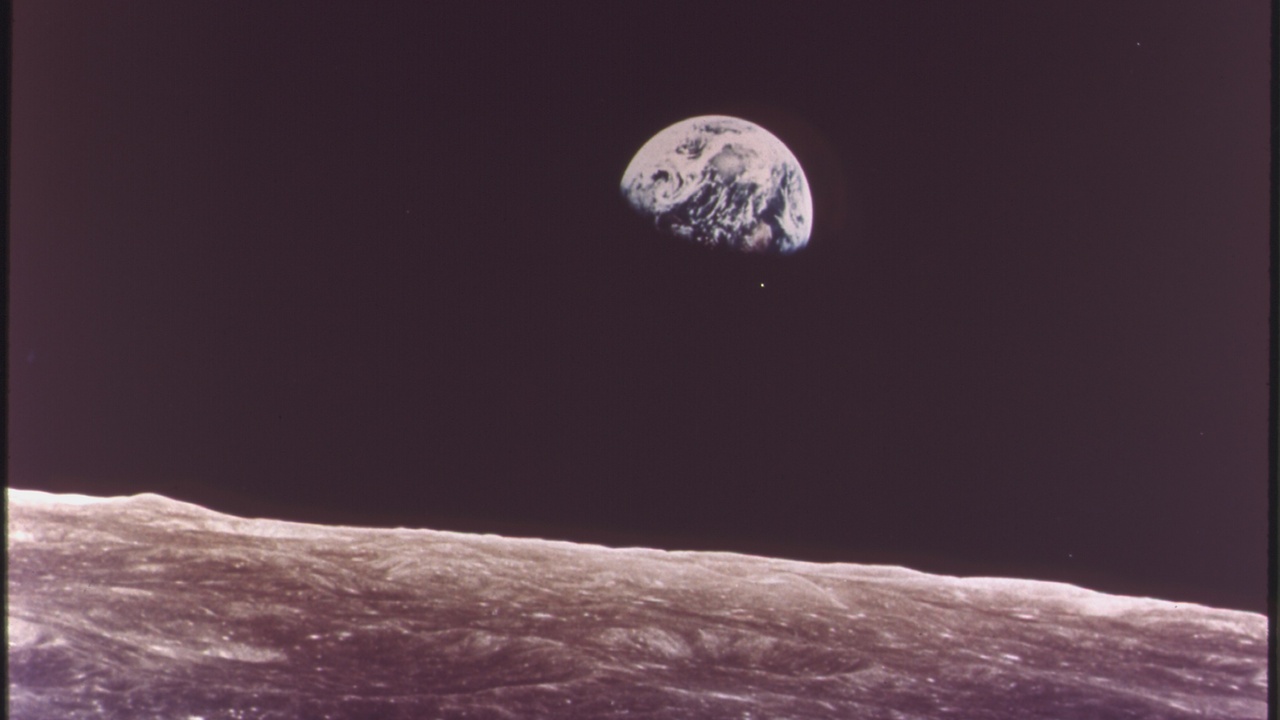
When humans left low Earth orbit and walked on another world, cameras came along. Crewed missions combined scientific documentation with images that shaped public opinion: medium-format Hasselblads and careful mission photography produced both geological context and enduring cultural touchstones.
4. Earthrise — Apollo 8 (1968)
On December 24, 1968, during the Apollo 8 lunar orbit, astronaut William Anders captured what became known as Earthrise: a blue-and-white Earth lifting above the Moon’s gray limb. The shot was taken by a human crew and quickly became symbolic around the world.
Earthrise affected more than space fans. It is frequently cited in histories of environmentalism (the first Earth Day followed in 1970), and dozens of nations and organizations have referenced the photograph when arguing for planetary stewardship. Anders later described the moment as profoundly moving; museum displays and NASA galleries still highlight that frame as a turning point in public perception.
5. Apollo 11 lunar surface photography (1969)
On July 20, 1969 Neil Armstrong and Buzz Aldrin took the first human-held photographs on another world. Apollo 11 used specially modified Hasselblad 500EL cameras during EVAs to document the landing site, surface sampling, and crew activities.
Those medium-format images served science and storytelling alike: they provided precise context for lunar samples, supported geological analysis, and became central visual proof of the landing. Famous frames — Armstrong’s footprints, Aldrin with the American flag, the lunar module against black sky — entered global culture and remain primary-source documents for researchers and the public.
Robotic Deep-Space Photography: Voyagers, Rovers, and Orbiters
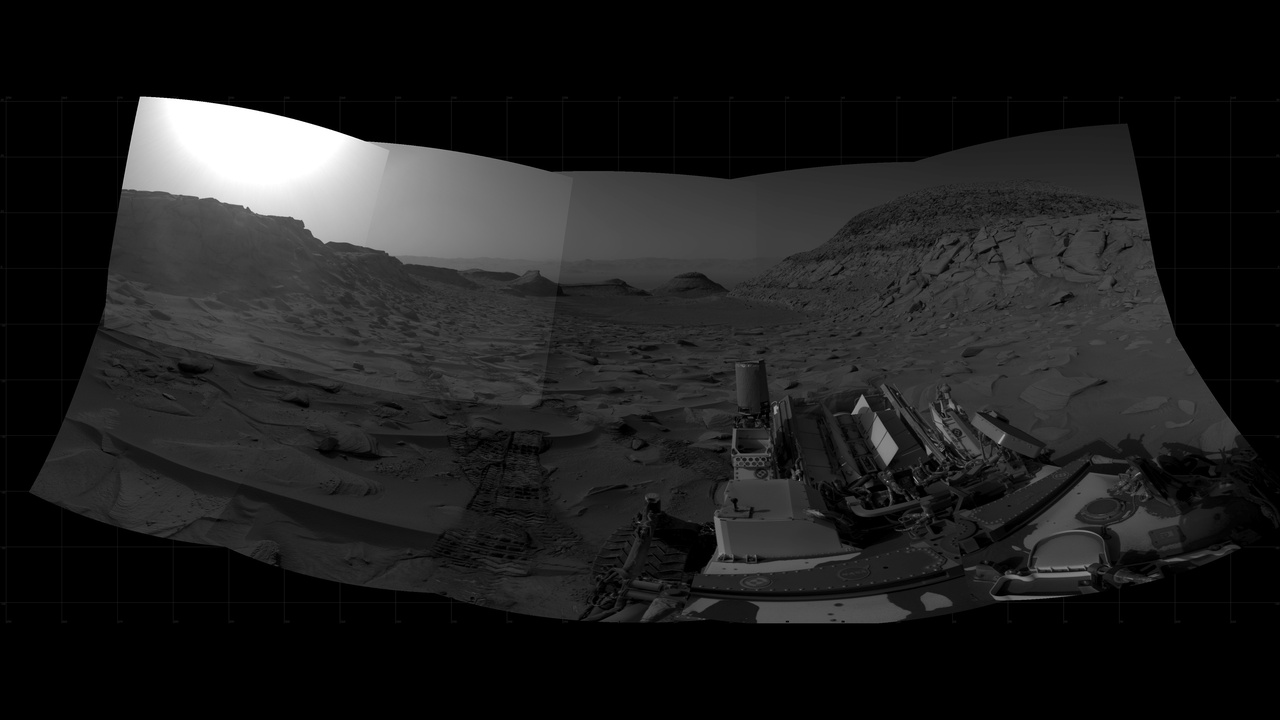
Robotic missions extended photography across the solar system. Flybys provided fast close-ups, orbiters offered long-term monitoring, and landers/rovers delivered ground-level panoramas. Advances included stabilized platforms, multispectral detectors, and reliable data return over vast distances.
6. Voyager flybys and the ‘Pale Blue Dot’ (1979–1990)
The Voyager spacecraft transformed our view of the outer planets. Voyager 1 and 2 returned detailed images of Jupiter and Saturn in 1979–1980, revealing active weather, intricate ring structures, and previously unknown moons.
Those encounters expanded planetary science—close-ups of Jupiter’s Great Red Spot and Saturn’s rings led to new models of atmospheric dynamics and ring particle behavior. A decade later, in 1990, Voyager 1 turned its camera back and photographed Earth as a tiny point of light, the “Pale Blue Dot,” a picture Carl Sagan used to argue for humility and planetary perspective.
7. Mars rovers: surface panoramas and in-situ imaging (1997–present)
Surface rovers ushered in long-duration, high-resolution planetary photography. The path began with Sojourner on Mars Pathfinder (1997), continued with Spirit and Opportunity (2004), and scaled up through Curiosity (2012) and Perseverance (2021).
Rover cameras such as Mastcam and MAHLI provide context shots for rock samples, targeted close-ups for mineralogy, and sweeping panoramas that mimic a human field of view. Perseverance’s images of Jezero Crater, plus aerial views from the Ingenuity helicopter, have guided sample caching and offered the public immersive vistas of another world.
8. Cassini–Huygens: Saturn, rings, and Titan’s surface (2004–2017)
Cassini’s orbital insertion in 2004 began more than a decade of detailed imaging of Saturn and its moons, while the Huygens probe delivered the first pictures from Titan’s surface in 2005. Together they changed how scientists think about planetary systems.
Cassini’s ring-plane imaging campaigns exposed dynamic structures and propeller-shaped disturbances; seasonal monitoring mapped atmospheric changes. Huygens’ descent and surface photos revealed river-like channels and pebble-covered shores on Titan, proving that complex surface processes occur on distant worlds and guiding future mission concepts.
Space Telescopes and the Modern Imaging Revolution
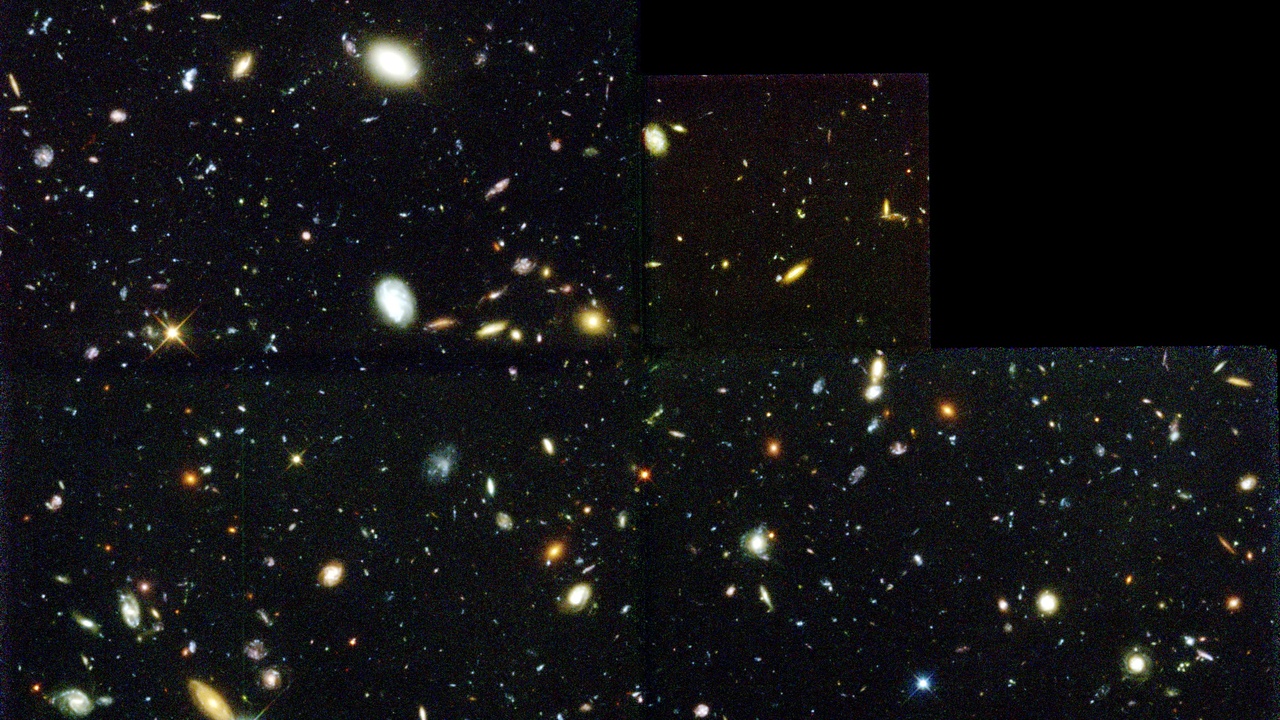
Putting telescopes above the atmosphere removed a major barrier to resolution and wavelength access. Improvements in detectors (CCDs and infrared arrays), long exposures, and sophisticated image processing turned single snapshots into deep, multiwavelength surveys that probe both faint and distant objects.
9. Hubble Space Telescope and the Deep Field (1990s)
Launched in 1990, the Hubble Space Telescope needed a servicing mission to correct its optics, but once fixed it produced some of the most consequential astronomical images ever taken. In 1995 the Hubble Deep Field pointed for nearly ten days at a tiny, apparently empty patch of sky and revealed thousands of galaxies in a single frame.
The Deep Field and its successors (Ultra Deep Field, eXtreme Deep Field) reached galaxies at redshifts around z~3–4 and beyond, supplying statistical samples for galaxy evolution studies. Hubble’s long-exposure imaging reshaped cosmology by showing that faint galaxies were abundant across cosmic time and by enabling measurements of star-formation histories and morphology evolution.
10. James Webb Space Telescope: a new era in infrared space photography (2022)
Launched in 2021 and releasing its first full-color public images on July 12, 2022, the James Webb Space Telescope marked a recent watershed. Its 6.5-meter segmented mirror and sensitive infrared instruments reached fainter and redder targets than previous facilities.
JWST’s early releases — the SMACS 0723 deep field, detailed views of the Southern Ring Nebula, Stephan’s Quintet, and exoplanet spectra — demonstrated dramatic gains in sensitivity and resolution. Those images probe galaxy formation in the early universe and extract chemical fingerprints from exoplanet atmospheres, delivering immediate scientific returns and broad public interest.
Summary
- Photography moved from single Moon daguerreotypes to rockets and robotic probes, changing astronomical record-keeping into repeatable measurement.
- Human missions produced some of the most culturally resonant frames (Earthrise, Apollo 11) while robotic platforms supplied long-term, in-situ science across the solar system.
- Space telescopes and modern detectors enabled deep, multiwavelength surveys that redefined galaxy evolution studies and opened exoplanet atmosphere characterization.
- These milestones in space photography show how technical innovation and scientific curiosity combined to change both research practice and public perspective.
- Watch next for enhanced small-sat imaging networks, upcoming flagship missions, and machine-learning methods that will further expand what we can see and measure from above.
Enjoyed this article?
Get daily 10-minute PDFs about astronomy to read before bed!
Sign up for our upcoming micro-learning service where you will learn something new about space and beyond every day while winding down.

